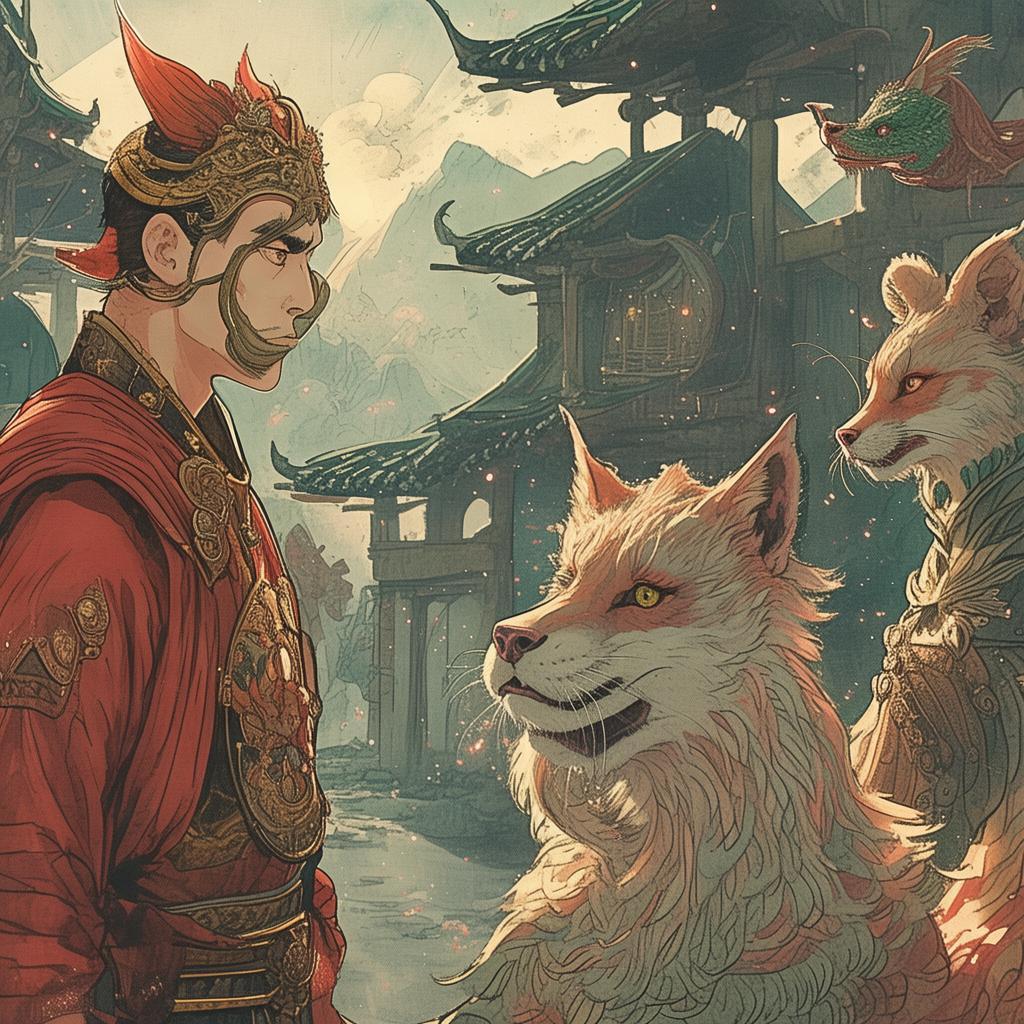The Zen of the Dragon's Claws
In the ancient village of Jingzhou, nestled between the misty mountains and the roaring rivers, there lay an ancient temple known as the Zen Monastery of the Dragon's Claws. This was no ordinary temple; it was a sanctuary for those who sought the harmony between the body and the mind, the art of the martial and the wisdom of the Zen.
The story begins with a young monk named Ming, whose eyes were as sharp as the dragon's claws that adorned the temple's sign. Ming had been a student of martial arts since childhood, but it was his innate curiosity for the Zen philosophy that led him to the temple's gates. He had heard tales of the temple's founder, Master Hua, a legendary figure who had mastered the art of combining Zen meditation with the martial arts.
Upon entering the temple, Ming was greeted by the serene Master Hua, who had a gentle demeanor that belied his years of martial prowess. Master Hua saw potential in Ming and decided to take him as a student. Ming's journey of enlightenment began with the most basic of tasks: to meditate and to train.
The days were filled with rigorous training, and the nights with meditation. Ming's body grew strong, and his mind became clear. But he was not content. He longed for the deeper understanding that would elevate him beyond the physical mastery of the martial arts.
One night, as Ming lay in his monk's cell, he had a dream. In the dream, he saw himself in a vast, dark forest, lost and disoriented. Suddenly, a dragon appeared before him, its scales shimmering with an otherworldly light. The dragon spoke to Ming, its voice deep and resonant, "You seek the Zen of the martial arts, but you must first understand the nature of conflict."

Ming awoke from his dream, his heart pounding with a newfound determination. He sought out Master Hua, who listened intently as Ming recounted his dream. "Conflict is the essence of life," Master Hua said, "and to master the martial arts, you must master conflict."
The next day, Master Hua presented Ming with a challenge. "Go to the village and find the most skilled fighter, and defeat him without harming him. Only then will you have truly understood the Zen of the martial arts."
Ming set out on his quest, his mind clear and focused. He traveled through the village, and soon, he found himself in the courtyard of the most feared fighter, a man known as the Tiger. Ming entered the courtyard, his heart calm and his mind at peace.
The Tiger, a man of imposing stature, watched Ming with a mix of curiosity and disdain. "You come here, a young monk, to challenge me?" he asked.
Ming nodded. "I seek to understand conflict, and I believe you are the one who can teach me."
The Tiger laughed, a sound that echoed through the courtyard. "Very well, young monk. You will fight me, and if you win, you may leave without harm."
The fight was fierce, with Ming and the Tiger trading blows with a skill that belied their years. The Tiger's attacks were swift and powerful, but Ming's movements were fluid and precise. The Tiger was forced to retreat, his eyes wide with shock.
The fight ended with a single blow from Ming, who used the Zen principle of "non-resistance" to deflect the Tiger's final strike. The Tiger fell to the ground, defeated but not injured.
Ming turned to the Tiger, his eyes filled with compassion. "You have taught me much," he said. "Conflict is not about winning or losing, but about understanding the nature of the opponent."
The Tiger nodded, his face a mask of respect. "You have won, monk," he said. "You have won not just the fight, but the true understanding of the martial arts."
Ming returned to the temple, his spirit soaring. Master Hua greeted him with a smile. "I see you have returned with the wisdom you sought," he said.
Ming bowed. "Thank you, Master. I have learned that the true essence of the martial arts is not in the physical prowess, but in the harmony of mind and body."
Master Hua placed his hand on Ming's shoulder. "You have become a true martial monk, Ming. Your journey is far from over, but you have taken the first step on the path to enlightenment."
And so, Ming continued his journey, his heart filled with a newfound understanding of the martial arts and the Zen philosophy. He became a legend in his own right, teaching others the balance between the physical and the spiritual, the art of the martial and the wisdom of the Zen.
And the tale of the Zen of the Dragon's Claws was passed down through generations, a testament to the power of harmony and the beauty of the martial arts.
✨ Original Statement ✨
All articles published on this website (including but not limited to text, images, videos, and other content) are original or authorized for reposting and are protected by relevant laws. Without the explicit written permission of this website, no individual or organization may copy, modify, repost, or use the content for commercial purposes.
If you need to quote or cooperate, please contact this site for authorization. We reserve the right to pursue legal responsibility for any unauthorized use.
Hereby declared.









